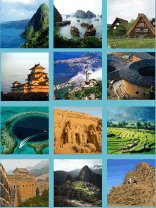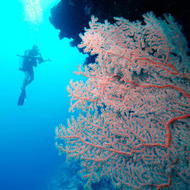Guide 6: Managing the development of tourism infrastructure
What this guide will tell you:
This guide will tell you why infrastructure is vital to sustainable tourism and how to begin the process of developing appropriate infrastructure.
Steps to success:
- Why this matters
-
According to the World Tourism Council, infrastructure is the single most important key to tourism growth and performance. Tourists use a tiny fraction of their overall visitor spending at the actual heritage site in most destinations; main tourism spending goes towards transport and travel, accommodation, food and drink, and retail and leisure. Understanding the tourism market is not normally the job of heritage managers, but to gain the most economic benefit from visitors they need to develop products, services, or partnerships that return more financial value. This extra revenue would, in turn, support site management and sustainability.
You should undertake destination development with an awareness of the commercial realities of your destination: how can you sustainably encourage increased spending from tourists to benefit your site and/or local community? You also need to be aware that tourism often results in massive increases in the population of some communities, especially during the peak seasons, and this raises many issues about the sustainability of the destination as a whole.
-
 Begin a master-planning process to ensure the infrastructure is fit-for-purpose for future tourism development and does not negatively affect the OUV
Begin a master-planning process to ensure the infrastructure is fit-for-purpose for future tourism development and does not negatively affect the OUV -
Identify the key stakeholders who can influence the physical development of the destination in the future. Stages 1 and 2 should have established whether tourism growth is appropriate, manageable at your destination, and how best this might happen. This will often require a long-term approach to managing the development of infrastructure.
With some sites experiencing growth of visitor numbers at 20-40% per annum, some destinations will have to make big decisions about curtailing growth or developing the infrastructure to deal with it. You might need to involve people with expertise in water, waste, transport, and tourism trends and markets analysis, so the different elements of the destination are effectively interlinked.
Start by identifying what is needed to make the current tourism sector more sustainable, and what might also be needed for any projected or desired growth in visitor numbers. There is no point having unachievable goals, but if the current or future demand exceeds the capability of the current infrastructure, then something has to give. It may mean some form of control to manage numbers, or the need for new infrastructure.
If people cannot get to your site or have no place to stay – no matter what you do to encourage them – they simply cannot visit. Many destinations have high room occupancy in peak season and cannot (without new hotels, etc.) accommodate more visitors. If there is no spare capacity, or it is not sustainable to increase capacity, then your destination is left with two options:
- Use your World Heritage and your site’s story to attract visitors in the non-peak months, which would sustain tourism jobs for local people year-round.
- Simply do not try to increase visitor numbers. Instead, develop and implement a strategy for changing the visitor profile to higher spending, more sympathetic and more sustainable visitors, using WH Status as a driver.
Some sites with little or no hotel infrastructure have developed a system of 'home stays', which enable visitors to stay with local people. This also means that the host community secures a greater share of visitor spending.
Making tourism more sustainable requires careful thought about the transport infrastructure in order to minimize CO2 emissions and congestion. It also demands that accommodation minimizes its ecological footprint through good management practices and strategic thinking about water, renewable technologies, and food and waste management. Provide tourism businesses with clear guidelines about the need for appropriate systems to treat, re-use, or safely release waste water or solid wastes, as well as other forms of pollution (such as light and noise pollution). You can also encourage businesses to publicize their energy reductions and sustainability commitments. If analysis of your infrastructure does not look at tourism in its widest sense, then it will be flawed and poorly developed.
-
 Develop a spatial masterplan for the destination
Develop a spatial masterplan for the destination -
Invest in a master-planning process that takes account of the constraints and responsibilities of a World Heritage site. Many destinations will experience development that has a capital cost of many hundreds of millions of dollars. Given this scale of investment, it makes good sense from both a commercial and a conservation perspective to have a masterplan that sets the parameters of growth. This often requires specialist support or at least a combined effort of specialist heritage staff and planners who can work together to develop a plan that makes it clear to everyone:
- Where things can and cannot happen
- What the requirements would be of any development
- Why these decisions have been made
It is essential that stakeholders believe the future of the destination can be shaped, influenced, and ultimately designed to be fit-for-purpose – this is how great destinations secure the outcomes they desire. It is about developing a progressive vision for tourism that protects, conserves, and respects important heritage and delivers outcomes that are desired by the host communities. The alternative is a laissez-faire approach in which conservationists will always be fighting a reactive battle against the negative effects of tourism growth.
Publish the masterplan so that tourism businesses, the community, and conservationists all know what kinds of development are appropriate in any given area of the destination. No tourism business enjoys being told its growth is potentially constrained by its location, but it is worse to invest large amounts of money in plans and ideas that are not likely to be approved because they may have a negative effect on the OUV of the site. There are times a great deal of money allows projects to go ahead. However, by damaging the heritage, you ultimately waste that money by destroying the OUV, which is the attraction of that destination to tourists.
-
 Plan ahead for the infrastructure you need to achieve the strategic goals you desire
Plan ahead for the infrastructure you need to achieve the strategic goals you desire -
Location matters. The location of tourism infrastructure – airports, railways stations, bus depots, hotels, B&Bs, restaurants, bars, cafes, museums, retail outlets, etc. – usually defines where visitors will spend their money, who will benefit from it, who will not, and where the ecological footprint of the visitor is experienced. Changing the location of infrastructure can have profound positive or negative impacts on the heritage, the host community, and their culture and quality of life. If the strategic goal is to offer improved economic opportunities for local people, then it is imperative some of the tourism infrastructure where money is spent is in locations that local people can own, manage, or work. For heritage management reasons, it may be necessary to relocate infrastructure away from the heritage, or to develop new infrastructure at some distance to ensure that resources, such as water and waste can be managed effectively. Keep in mind where this happens, there is a risk of the host community being excluded from significant economic benefits.
Some sites are already serviced by infrastructure located some distance away from the site, and this has both benefits and costs – the cost being that much of the economic impact is lost as visitors stay, eat, drink, shop, and relax elsewhere. In these situations, there can be a mismatch between those who suffer the costs and constraints of the site, and those who benefit and profit. In these instances, some mechanisms to return revenue to the host community are often needed (see Guide 9 on Fundraising and Investment). If your tourism infrastructure is in the wrong location, you need to consider either:
- Developing economic infrastructure in a more appropriate location
- Working within your infrastructure constraints
- Or creating a ‘payback’ mechanism to link the distant tourism infrastructure to the costs of the site.
Scale matters. Larger businesses are less likely to be locally owned, but they are often more efficient, productive, and return higher wages to the local community. Because of their scale, larger businesses can deliver service to a larger numbers of visitors at lower prices, but economic sustainability suffers as profits from the business are often not retained locally, regionally, or even nationally. On the other hand, local sustainable tourism initiatives are small and lack the scale and capacity to cater to the majority of visitors to a destination. Critically, small businesses may not be able to offer the year-round, skilled employment, salary, or career progression opportunities larger businesses can.
The challenge for your site is to find the balance between the benefits of large scale businesses that can provide high quality employment and tourist services, and the smaller sustainable businesses, which are much more likely to be locally owned and managed. Support host communities to develop their businesses to have the necessary scale to maximize benefit. One solution is to explore different ownership models for hotels and other areas of infrastructure so the host community or groups of residents can develop a share in the destination.
Quality matters. Cultural and World Heritage tourists are more economically valuable, but they also have higher expectations about quality. The ability to secure the maximum benefit from tourism in a destination is inextricably tied to the quality of product, particularly the accommodation your destination offers. If your site lacks enough quality accommodation, it could significantly affect the economic profile and impact of the tourists visiting your site – the more visitors to your destination that stay in good quality accommodation, the greater their spending. You need to understand if the quality of your accommodation stock is limiting the economic potential from particular types of visitor, and then work with businesses to improve quality. Some destinations have developed quality improvement programmes with support and incentives for businesses willing to invest their own money in raising standards. Accreditation can be a powerful way to reward investors for doing the right kind of development – with incentives for those who go the extra mile, such as promoting the most sustainable businesses prominently on the World Heritage website.
Capacity matters. Your work on understanding tourism (Guide 1 Understanding Tourism) should have revealed what the capacity curve for your destination looks like. In most cases, there is a peak period, when the existing accommodation is close to capacity, and ‘shoulder’ or off-peak seasons, when it is running well below capacity. One of the most sensible ways to improve the economic performance of a destination, and ensure local people have all-year-round employment, is to promote off-peak season visits. This requires little or no new infrastructure, and it can make a big difference to the efficiency of the destination. Simply building more peak season capacity can often be misguided and unsustainable.
Ownership matters. In many destinations the opportunities for local people are limited to low skilled and lower paid roles, so when developing plans for the future of your destination, explore whether or not some of the desired infrastructure can be developed in ways that will benefit the host community. There are a range of ownership models that enable communities to own elements of the tourism infrastructure or be shareholders in it. Some destinations have strong cooperatives of individuals or businesses that offer products, services, or experiences, and they have invested in such models to empower local people. Ownership gives local people more control and a share of the profits. However, it should also be pointed out that ownership is not always critical. Most turnover for a hotel is in wages, with the profit being only a small margin of that turnover.
Transport and routing matters. Being able to influence transport is crucial to creating a sustainable system at many World Heritage sites. It is important that destinations develop itineraries with transport providers that encourage more sustainable transport, but also influence where people stop to spend their money and where they have their environmental impact. Simple things like having a rest room break before entering a site can reduce the water usage and waste disposal issues within a site.
-
 All growth needs to be in the context of respecting and conserving the OUV of the World Heritage site and its environs
All growth needs to be in the context of respecting and conserving the OUV of the World Heritage site and its environs -
Above all, it is the responsibility of the destination to protect the heritage from irresponsible development through planning or 'development control'. The World Heritage site, itself, and the designation are key assets for any destination – all plans for developing infrastructure need to be based on a deep respect for, and understanding of, the World Heritage site. It is crucially important that the sense of place and distinctiveness are protected. These guides are based on the assumption that sites value their World Heritage status and have planning control systems that can protect the heritage from development that is not appropriate. Work hard to retain the sense of place, distinctiveness, and authenticity of the destination. When you do have to build new infrastructure, work closely with planning control officers so they understand the need to balance heritage conservation and the demand for development.
-
 Secure and encourage investment to make your plans a reality
Secure and encourage investment to make your plans a reality -
Encourage the private sector to develop the infrastructure. The role of destination management is to define the parameters of growth – setting out what is appropriate (and where) in a tourism destination. This will often mean that the development that does take place will be commercial.
Develop a Community Fund to help local people and communities secure the capital needed to offer goods, services, and products to visitors. Relatively small amounts of seed capital can give local people a foothold in the marketplace (See Guide 9 Fundraising and Investment).
Identify any public realm or free-to-access infrastructure needed and find a way to deliver it. In this case, it is critical that an effective case is researched, well-crafted, and specific to the investment sought (See Guide 9 Fundraising and Investment).


